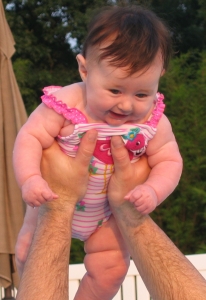[fusion_text]At the core of most therapeutic work lies this central question: does relating deeply to another human being mean relinquishing our authenticity, or are we able to negotiate relationships and stay who we are?
Generally, the challenges that manifest in our adult lives today are rooted in childhood: did we learn early on to sacrifice parts of who we are for the sake of the vital connection with our caregivers? Was it too frightening to let go of the bond and preferable for us to lose our dignity? Maybe we also learned to withdraw contact from our caretakers because it was too challenging for us as children. The risk was to lose ourselves in the relationship but it often resulted in utter loneliness.
 At the core of these questions lie patterns of attachment deeply seated in the mind and imprinted into muscle elasticity.
At the core of these questions lie patterns of attachment deeply seated in the mind and imprinted into muscle elasticity.
The discovery that overwhelming emotional stress leads to emotional and muscular resignation in childhood has created a shift in somatic therapy. This is where Bodynamics differs from other approaches: it allows us to build resources by using specific muscles to teach or awaken skills long forgotten and related to the issues being worked on verbally. And when this is done in a safe relationship, attachment patterns may be healed. This is attachment theory at its finest.
 Bodynamics is a body-centered developmental psychotherapy model. It describes development from before birth and continues through the teenage years. The model follows seven developmental stages in a detailed description of how our experience as infants and children is encoded in both mind and muscles (the psychomotor element). Knowing the psychological function of each muscle allows us to use them as a resource in therapy. We can target a specific developmental stage and zero in on the childhood origins of the difficulties we are presently experiencing.
Bodynamics is a body-centered developmental psychotherapy model. It describes development from before birth and continues through the teenage years. The model follows seven developmental stages in a detailed description of how our experience as infants and children is encoded in both mind and muscles (the psychomotor element). Knowing the psychological function of each muscle allows us to use them as a resource in therapy. We can target a specific developmental stage and zero in on the childhood origins of the difficulties we are presently experiencing.
By reactivating the age-appropriate resources/muscles, we retrieve forgotten inner resources or develop new ones. We are then capable of approaching the deeper layers of our disrupted or traumatic experience with success. We address what is troubling or missing in our present lives as we use the body to bring our history right into the therapy room. Working on experiences from our past is simplified and shortened because we can develop precise abilities that were missing then and are needed now.[/fusion_text]
